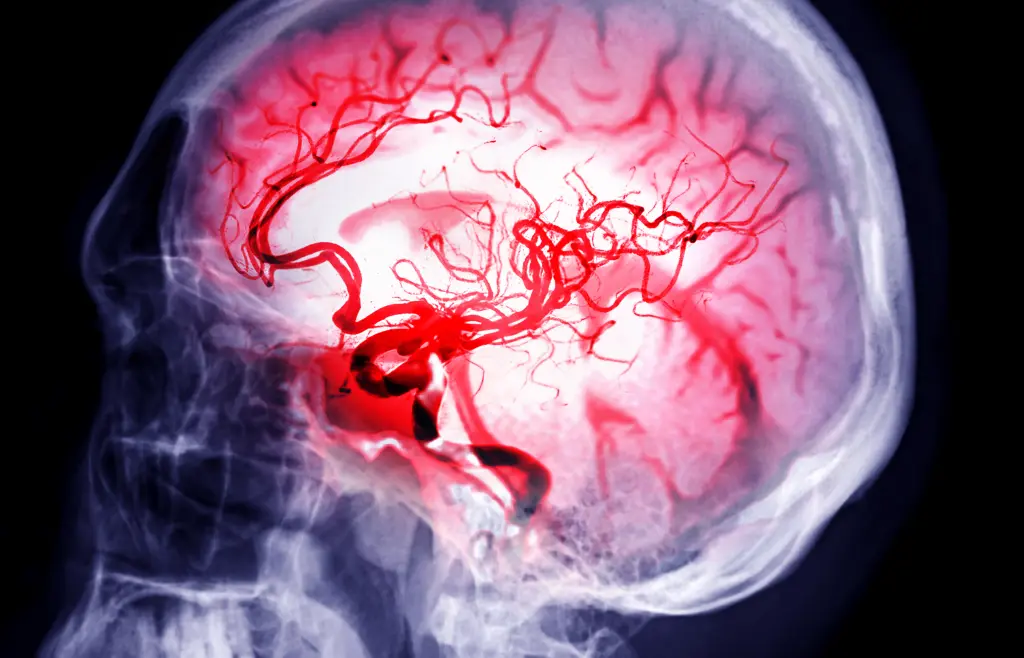Each year, more than 600,000 Americans experience their first stroke, making it one of the leading causes of disability and death in the United States. However, studies reveal that up to 80% of strokes can be prevented. The American Stroke Association (ASA) has issued new guidelines to help reduce stroke risks, focusing on lifestyle changes, health screenings, and early interventions. This article will explore what causes strokes, risk factors, and practical prevention tips that can significantly reduce the likelihood of experiencing a stroke.

An 81-year-old patient undergoes testing to detect a stroke. Most stroke cases are preventable, according to the American Stroke Association.
What Is a Stroke? Understanding the Basics
A stroke occurs when blood flow to the brain is either blocked or reduced, depriving brain tissue of oxygen and nutrients. It’s an emergency situation that requires immediate medical attention to minimize brain damage.
Two Main Types of Stroke
- Ischemic Stroke: The most common type, accounting for about 87% of all strokes, occurs when a blood clot blocks an artery supplying blood to the brain.
- Hemorrhagic Stroke: Caused by a burst blood vessel, leading to bleeding in or around the brain.
Both types can have devastating effects, making early prevention crucial.
Identifying Risk Factors: Who Is at Greater Risk?
Stroke risk factors can be divided into two categories: modifiable (factors you can change) and non-modifiable (factors you cannot change). Understanding your personal risk is the first step toward prevention.
Modifiable Risk Factors
- High Blood Pressure: The leading cause of strokes, it damages arteries and makes them more prone to blockages or ruptures.
- High Cholesterol: Excess cholesterol can lead to plaque buildup in arteries, reducing blood flow to the brain.
- Diabetes: Elevated blood sugar levels can damage blood vessels and increase stroke risk.
- Obesity: Excess weight strains the heart and arteries, raising stroke risk.
- Smoking: Damages blood vessels and promotes clot formation, doubling stroke risk.
- Sedentary Lifestyle: Lack of physical activity can lead to weight gain, high blood pressure, and poor cholesterol levels.
Non-Modifiable Risk Factors
- Age: Risk increases with age, especially after age 55.
- Gender: Women are more likely than men to have a stroke, partly due to factors like hormonal changes, longer life expectancy, and pregnancy complications.
- Family History: A history of stroke in close relatives can increase personal risk.
- Race and Ethnicity: African Americans, Hispanics, and Native Americans have a higher stroke risk than Caucasians.
ASA’s Updated Guidelines for Stroke Prevention
The American Stroke Association has released updated guidelines focusing on primary prevention—preventing the first stroke from occurring. Here are some of the main recommendations:
1. Adopt the Mediterranean Diet
The Mediterranean diet emphasizes plant-based foods, such as fruits, vegetables, whole grains, legumes, nuts, and healthy fats like olive oil. It minimizes the intake of red meat, processed foods, and sugary beverages.
- Why It Works: The diet is rich in antioxidants, fiber, and omega-3 fatty acids, all of which promote heart health and reduce inflammation.
- How to Start: Begin by increasing your intake of vegetables, swapping red meat for fish or plant proteins, and using olive oil instead of butter.
2. Stay Physically Active

Regular exercise is a cornerstone of stroke prevention. The ASA recommends that adults get at least:
- 150 minutes per week of moderate-intensity aerobic exercise (like brisk walking or cycling), OR
- 75 minutes per week of vigorous exercise (like running or high-intensity interval training).
Being active improves blood circulation, helps maintain a healthy weight, and can lower blood pressure.
3. Control High Blood Pressure and Cholesterol
Managing blood pressure and cholesterol is essential for stroke prevention. Regular screenings can help detect issues early, enabling prompt treatment.
- Blood Pressure Control: Aim for a target of 120/80 mmHg. Use medications if necessary, and adopt a low-sodium diet to support healthy levels.
- Lower Cholesterol: Focus on increasing good cholesterol (HDL) while reducing bad cholesterol (LDL) through diet, exercise, and medication as needed.
4. Maintain a Healthy Weight

Being overweight increases your risk of developing high blood pressure, diabetes, and heart disease—all of which contribute to stroke risk.
- How to Manage Weight: Combine a balanced diet with regular exercise. Even losing 5-10% of your body weight can significantly lower stroke risk.
5. Manage Blood Sugar Levels
Diabetes can double or even quadruple the risk of stroke. Keeping blood sugar levels within a healthy range can prevent damage to blood vessels.
- Monitor Regularly: If you have diabetes or are at risk, check your blood sugar levels frequently and adhere to a diabetes-friendly diet.
- Medications: Consult your doctor about medications that can help manage blood sugar effectively.
6. Avoid Smoking and Limit Alcohol
- Quit Smoking: Smoking accelerates plaque buildup in arteries, increasing stroke risk. Quitting smoking can lower your stroke risk within months.
- Moderate Alcohol: Limit alcohol intake to one drink per day for women and two drinks per day for men. Excessive drinking can raise blood pressure and cause irregular heartbeats.
Special Considerations for Women: Unique Risk Factors
Women are at higher risk of stroke due to factors like birth control use, pregnancy complications, and longer life expectancy.

Key Risk Factors for Women
- Birth Control Pills: Some oral contraceptives can increase blood clot risks, particularly in women who smoke or have high blood pressure.
- Pregnancy Complications: Conditions like gestational hypertension and preeclampsia can increase stroke risk.
- Post-Menopausal Hormonal Changes: Hormonal shifts after menopause can contribute to higher blood pressure and cholesterol levels.
Women should discuss their stroke risk with their healthcare provider, especially if they have a family history or use birth control pills.
The Role of Social Determinants of Health
Social factors also play a significant role in stroke risk:
- Education and Awareness: Educating communities about stroke risks and prevention strategies is critical for reducing stroke rates.
- Access to Care: Ensuring access to healthcare services, nutritious food, and safe environments for physical activity is essential for preventing strokes.
- Financial Stability: Economic challenges can limit access to healthcare and nutritious food, increasing stroke risk among lower-income populations.

How the Stroke Risk Calculator Works
To further assist in identifying stroke risk, the American Heart Association developed the PREVENT risk calculator. It estimates 10-year and 30-year risks for stroke and heart disease, especially for people over 30. By inputting factors like age, gender, cholesterol levels, blood pressure, and lifestyle habits, individuals can better understand their personal risk and take preventive measures.
Conclusion: Prevention Is Key to Reducing Stroke Risk
Stroke may be common, but it’s also highly preventable. By adopting a healthier lifestyle, controlling risk factors like blood pressure and cholesterol, and staying informed about individual risk, you can significantly reduce the likelihood of experiencing a stroke. Remember, small changes today can lead to a healthier, stroke-free future.


